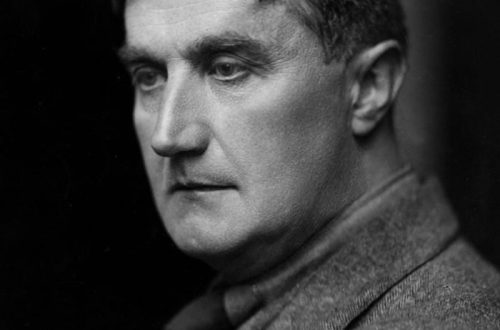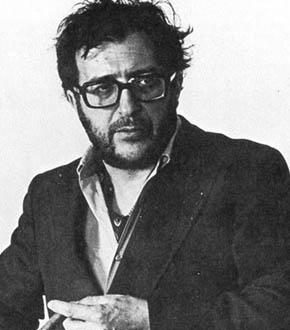
Dieterich Buxtehude (Dieterich Buxtehude) |
Dieterich Buxtehude

D. Buxtehude is an outstanding German composer, organist, head of the North German organ school, the greatest musical authority of his time, who for almost 30 years held the position of organist in the famous St. Mary’s Church in Lübeck, whose successor was considered an honor by many great German musicians. It was him who in October 1705 came from Arnstadt (450 km away) to listen to J.S. Bach and, forgetting about the service and statutory duties, stayed in Lübeck for 3 months to study with Buxtehude. I. Pachelbel, his greatest contemporary, the head of the Middle German organ school, dedicated his compositions to him. A. Reinken, a famous organist and composer, bequeathed to bury himself next to Buxtehude. G. F. Handel (1703) together with his friend I. Mattheson came to bow to Buxtehude. The influence of Buxtehude as an organist and composer was experienced by almost all German musicians of the late XNUMXth and early XNUMXth centuries.
Buxtehude lived a modest Bach-like life with daily duties as organist and musical director of church concerts (Abendmusiken, “musical vespers” traditionally held in Lübeck on the last 2 Sundays of Trinity and 2-4 Sundays before Christmas). Buxtehude composed music for them. During the life of the musician, only 7 triosonates (op. 1 and 2) were published. The compositions that remained mainly in manuscripts saw the light much later than the death of the composer.
Nothing is known about Buxtehude’s youth and early education. Obviously, his father, a famous organist, was his musical mentor. Since 1657 Buxtehude has served as church organist in Helsingborg (Skåne in Sweden), and since 1660 in Helsingor (Denmark). The close economic, political and cultural ties that existed at that time between the Nordic countries opened up a free flow of German musicians to Denmark and Sweden. The German (Lower Saxon) origin of Buxtehude is evidenced by his surname (associated with the name of a small town between Hamburg and Stade), his pure German language, as well as the manner of signing the works of DVN – Ditrich Buxte – Hude, common in Germany. In 1668, Buxtehude moved to Lübeck and, having married the daughter of the chief organist of the Marienkirche, Franz Tunder (such was the tradition of inheriting this place), connects his life and all subsequent activities with this northern German city and its famous cathedral.
The art of Buxtehude – his inspired and virtuoso organ improvisations, compositions full of flame and majesty, sorrow and romance, in a vivid artistic form reflected the ideas, images and thoughts of the high German baroque, embodied in the painting of A. Elsheimer and I. Schönnfeld, in the poetry of A. Gryphius, I. Rist and K. Hoffmanswaldau. Large organ fantasies in an elevated oratorical, sublime style captured that complex and contradictory picture of the world as it seemed to the artists and thinkers of the Baroque era. Buxtehude unfolds a small organ prelude that usually opens the service into a large-scale musical composition rich in contrasts, usually five-movement, including the succession of three improvisations and two fugues. Improvisations were intended to reflect the illusory-chaotic, unpredictably spontaneous world of being, fugues – its philosophical understanding. Some of the fugues of organ fantasies are comparable only with the best fugues of Bach in terms of the tragic tension of sound, greatness. The combination of improvisations and fugues into a single musical whole created a three-dimensional picture of multi-stage switching from one level of understanding and perception of the world to another, with their dynamic solidarity, a tense dramatic line of development, striving towards the end. Buxtehude’s organ fantasies are a unique artistic phenomenon in the history of music. They largely influenced Bach’s organ compositions. An important area of Buxtehude’s work is the organ adaptations of German Protestant chorales. This traditional area of German organ music in the works of Buxtehude (as well as J. Pachelbel) reached its peak. His choral preludes, fantasies, variations, partitas served as a model for Bach’s choral arrangements both in the methods of developing choral material and in the principles of its correlation with free, authorial material, designed to give a kind of artistic “commentary” to the poetic content of the text contained in the chorale.
The musical language of Buxtehude’s compositions is expressive and dynamic. A huge range of sound, covering the most extreme registers of the organ, sharp drops between high and low; bold harmonic colors, pathetic oratorical intonation – all this had no analogies in the music of the XNUMXth century.
Buxtehude’s work is not limited to organ music. The composer also turned to chamber genres (trio sonatas), and to oratorio (the scores of which have not been preserved), and to cantata (spiritual and secular, more than 100 in total). However, organ music is the center of Buxtehude’s work, it is not only the highest manifestation of the composer’s artistic fantasy, skill and inspiration, but also the most complete and perfect reflection of the artistic concepts of his era – a kind of musical “baroque novel”.
Y. Evdokimova





